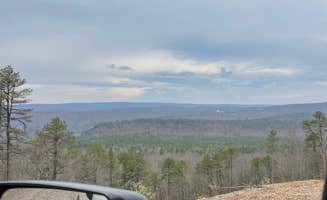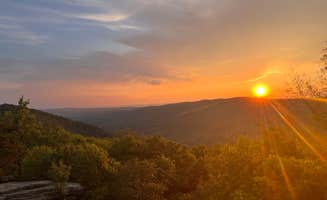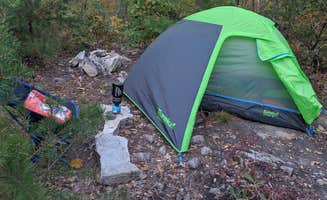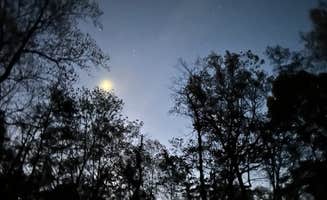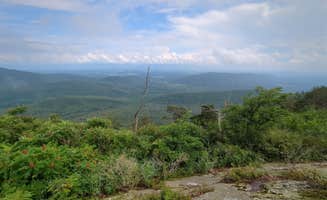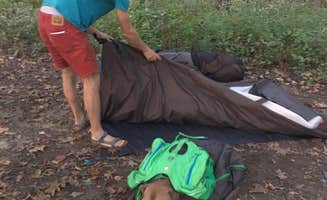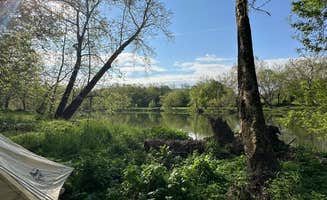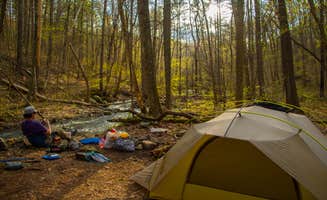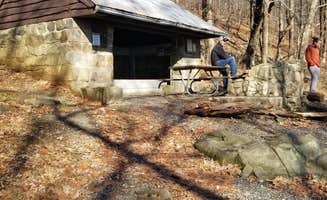Dispersed camping near High View, West Virginia offers access to forest service sites with varying road conditions throughout the George Washington National Forest. Elevations range from 800 to 2,400 feet, creating distinct temperature zones that can differ by 10-15 degrees between valley and ridge sites. Free camping options typically allow stays up to 14 days, though each management area has specific regulations.
What to do
Hiking options: The Veach Gap trail provides a moderate challenge with significant rewards. Jon N. notes, "It is about 4 miles up, so not too bad, but there is no water after the first mile. I have seen a small trickle part way up the mountain, but don't count on it. Pack up all the water you will need for the day/evening/morning." This Veach Gap - GWNF - Backpacking Site offers multiple established spots along the ridgeline.
Fishing access: Edwards Run Wildlife Management Area offers beginner-friendly fishing spots. Frank G. shares, "Fun place to teach the kids the basics of fishing, but the campground area leaves a little to be desired." Edwards Run Wildlife Management Area has grassy, level sites with toilet facilities.
River activities: South Fork Shenandoah River provides boat launch access for paddlers. Sumner C. explains, "The road to get to the campsite was well maintained and easy to get to. Campsites themselves were a tad overgrown but it was the beginning of the season. Seemed to be about a dozen spots to camp." During high water periods after heavy rain, sites can flood with river mud.
What campers like
Privacy between sites: Wolf Gap Recreation Area offers secluded camping with natural barriers. Kevin C. reports, "Most sites have a paved parking platform and then a second tier for the camp site. All sites are quite large and include picnic tables, fire rings and large tent platforms. The campsite itself is beautifully wooded. Each campsite is mostly secluded from the rest of the park." Wolf Gap Recreation Area has 9 total campsites with vault toilets.
Convenient access: Squirrel Hollow Road sites require minimal hiking from vehicles. Jon D. describes, "Large campsites and relatively quite. We took two vehicles and found several suitable sites. Traffic was light with one pickup overnight and a small convoy of motorcycles the next morning." Squirrel Hollow Road Camping offers true boondocking with minimal facilities.
Weekday solitude: Many campsites see significantly less traffic Monday through Thursday. Kevin C. notes about Squirrel Hollow, "Looks like a popular weekend camp spot for locals. We camped during the week and had nobody else camping on weekdays." These roadside sites are within a mile of paved highways.
What you should know
Weather considerations: Mountain conditions change rapidly throughout the day. Shari G. reports from Shenandoah National Park, "We needed every layer we brought, including winter hats, puffy jackets, and gloves. During the 6 days we were in the backcountry, we experienced everything from warm summer-like weather to chilly winter winds, both day and night." Pack for temperature ranges 15-20 degrees lower at high elevations.
Wildlife precautions: Black bears are common throughout all camping areas. Shari G. continues, "The black bears are awake and active! Be sure to hang your food or bring bear canisters. We not only saw bear scat all around, we saw an adorable black bear cub run off into the woods along the Piney Branch Trail." Shenandoah National Park Dispersed Sites require proper food storage.
Cell service limitations: Coverage varies dramatically by carrier and location. Lindsay C. notes about Little Fort Campground, "This page says that Verizon has limited service but I have a Verizon prepaid plan and I had no service at all starting from about 20 minutes away from the site, so I wouldn't count on having any reception." Download offline maps before arrival.
Tips for camping with families
Established facilities: Little Fort Campground offers family-friendly amenities. Sawyer B. explains, "Great established free campground! We got the last spot around 7pm. Site had a fire pit, table, parking spot, and tent platform. We used one of the sign in slips but many of the other campers did not. Bathrooms and bear proof trash was provided." Little Fort Campground has 9 designated sites.
Adventure timing: Arrive early on weekdays for best site selection. Lindsay C. shares, "I arrive at 7:30pm on a Saturday in late August and thought I might be too late to get a spot but there were only two other groups there so I had my pick of most of the sites." Competition for sites increases significantly on weekends and holidays.
Tent pad considerations: Some campgrounds provide platforms that affect tent setup. VanRumschpringa notes about Wolf Gap, "Many of the car parking pads are not level. But the tent pads appear to be." Non-freestanding tents may require alternative staking methods at sites with hard surfaces.
Tips from RVers
Small trailer access: Forest service roads often accommodate compact trailers. Dexter V. notes about Squirrel Gap Road, "Quite a few miles down Squirrel Gap Rd. There is another sunnier sight a little before this one. But this one is right off the road, entrance is steep." Small teardrop trailers can access most sites within a mile of paved roads.
Leveling challenges: Many dispersed sites require significant leveling for any trailer setup. Jim M. reports about Edwards Run, "As I pulled in there was a kiosk with a sign that said $10 camping fee but no info on how or where to pay. I tried to look at the WVDNR website but couldn't find it there either, However no one came by. Other than that the site was level and grassy." Bring additional leveling blocks for forest service road sites.
Backup options: National forest sites fill quickly during peak seasons. Heather shared about South Fork Shenandoah River, "The site was wonderful! Not too many spaces so it can fill up quick. There is a launch in the middle, so there is a bit of come and go." Have alternative locations mapped out within 10-15 miles of your primary destination.


